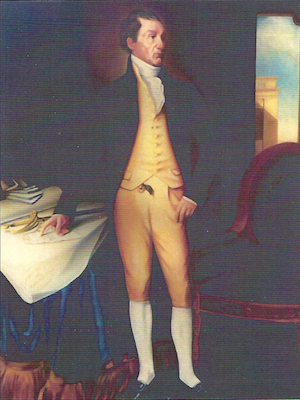 Andrew Monroe, an immigrant from Scotland, settled on what is now called Monroe Creek on the south side of the Potomac in Virginia, in 1650. For five generations his descendants would live on this land making their living and taking an active part in church and county affairs. Spence Monroe, father of the president, was a signer pf the Leedstown Resolution. The family owned the “Monrovie” property from 1650 until President Monroe sold it almost 200 years later, during which time they had an important role in the making of the new nation.
Andrew Monroe, an immigrant from Scotland, settled on what is now called Monroe Creek on the south side of the Potomac in Virginia, in 1650. For five generations his descendants would live on this land making their living and taking an active part in church and county affairs. Spence Monroe, father of the president, was a signer pf the Leedstown Resolution. The family owned the “Monrovie” property from 1650 until President Monroe sold it almost 200 years later, during which time they had an important role in the making of the new nation.
James Monroe’s schooling began with a local tutor, William Douglas, who taught him until he entered the Rev. Archibald Campbell’s parish school. He was there four years until the age of sixteen, when he entered William and Mary College. While at Campbell’s school he was a classmate of John Marshall, the future Chief Justice. They became life-long friends. At the outbreak of the Revolution, Monroe left college for the army where he served as an officer.
He was seriously wounded at Trenton in 1777. After the war he studied law and was admitted to the bar and began his political career.
James Monroe served in the Virginia Assembly as Virginia Delegate to the Continental Congress, U.S. Senator from Virginia, Minister to France in George Washington’s Administration, Governor of Virginia, Secretary of State and War, and President of the United States for two terms 1817-1825.
Chief among his accomplishments as president were the acquisition of Florida in 1819, the Missouri Compromise, and the promulgation of the Monroe Doctrine.
James Monroe held more high government offices than any president before or since, a great tribute to him and his family’s long association with Westmoreland County in Virginia’s Northern Neck.
